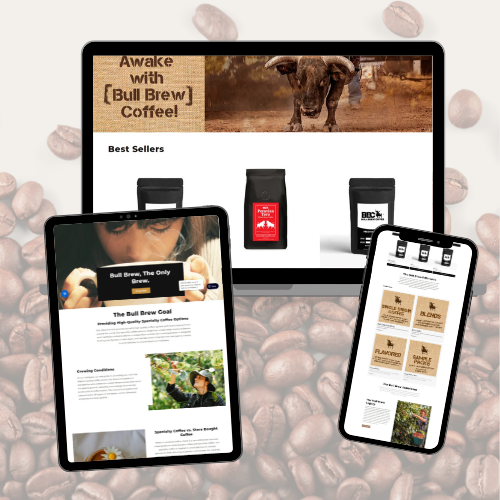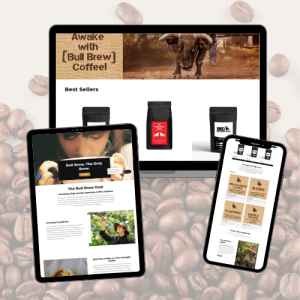
Ecommerce Payment Options
Choosing the right ones for your online store can significantly impact your sales and customer satisfaction. This blog will explore the pros and cons of several popular ecommerce payment options.

Usability: The hallmark of a great product lies in its usability. A product that is simple, intuitive, and easy to use enhances the user’s ability to achieve their goals with minimal effort. Usability marries efficiency and satisfaction, ensuring that users can navigate and interact with the product effectively, making their experience both productive and enjoyable.
Consistency: Consistency in design is akin to speaking a language fluently. When design elements like visual styling, tone, and interaction patterns are consistent across a product, it significantly improves the learning curve and reduces user confusion. This principle ensures that once a user learns how to do something, they can apply that knowledge across the entire product, creating a seamless and coherent experience.
Accessibility: Accessibility is the bridge that connects diverse users to a product, making it usable and enjoyable for people of all abilities, including those with disabilities. By implementing inclusive design practices such as keyboard navigation, screen readers, and sufficient color contrast, designers ensure that no user is left behind. Accessibility not only broadens the user base but also reflects a brand’s commitment to equality and inclusivity.
User-Centric Design: At the heart of UX design is the user. Adopting a user-centric approach means prioritizing the needs, preferences, and behaviors of the end-user throughout the design process. Through continuous user research and testing, designers can uncover insights that drive the development of products that truly resonate with users and meet their needs effectively.
Information Architecture (IA): Information Architecture is the backbone of user navigation and content discovery. By organizing, structuring, and labeling content in an intuitive way, IA helps users find information and complete tasks with ease. A well-thought-out IA leads to a more navigable and understandable product, enhancing the overall user experience.
Interaction Design (IxD): Interaction Design focuses on creating engaging interfaces with logical and thought-out behaviors. It involves designing each element that a user might interact with in such a way that these interactions feel natural and intuitive. Anticipating the user’s needs and ensuring a smooth flow through the product encourages a more interactive and satisfying user experience.
Visual Design: The visual aspect of a product plays a significant role in shaping the user’s perception and emotions. Effective visual design, which includes the use of typography, color scheme, and images, should align with the brand identity and enhance the user’s experience. Attractive and thoughtful design can significantly impact user engagement and satisfaction.
Feedback and Response Time: Immediate feedback to user actions is essential for maintaining engagement and preventing frustration. Whether it’s a simple animation to indicate a button has been pressed or a loading indicator for longer processes, timely feedback reassures users that the system is responsive to their actions, contributing to a more dynamic and interactive experience.
Error Management: An inevitable aspect of any user interaction with a product is encountering errors. Effective error management not only minimizes the occurrence of errors but also helps users recover from them when they do occur. Clear, helpful error messages and straightforward recovery options empower users, reducing frustration and improving the overall experience.
Testing and Iteration: The design process is iterative, with continuous testing and refinement being key to its success. Engaging real users in testing allows designers to gather valuable feedback, identify issues, and understand user behavior. This iterative process of testing, learning, and refining ensures that the product evolves to meet user needs more effectively over time.
By integrating these principles into the design process, UX designers can create products that are not only functional and accessible but also delightful to use, ensuring a positive experience for all users.
Understanding and applying core UX design principles is not just about creating products that are easy to use; it’s about ensuring those products meaningfully connect with users, drive business success, and foster inclusivity.
Here’s why these principles are indispensable in the design process:
Impact on User Satisfaction: The cornerstone of good UX design lies in its ability to elevate user satisfaction. A product designed with the user in mind is more likely to meet their needs effectively, leading to enhanced satisfaction. This, in turn, boosts retention rates as users are more inclined to continue using a product that resonates with them. Moreover, satisfied users often become advocates for the product, generating positive word-of-mouth that is invaluable for brand reputation.
Business Success: In the competitive landscape of digital products, those that offer superior user experiences often rise to the top. A well-designed product not only attracts users but also retains them, leading to increased sales and customer loyalty. By differentiating through high-quality UX, businesses can create a significant competitive advantage that translates into tangible success.
Accessibility and Inclusivity: Adhering to UX principles ensures that products are accessible to everyone, including users with disabilities. This commitment to accessibility broadens the potential user base and demonstrates a brand’s dedication to inclusivity. By designing for a diverse audience, products can reach a wider market and resonate with a broader spectrum of users.
Reduced Development Costs: Investing in UX design from the early stages of product development can significantly reduce costs over time. By identifying and addressing usability issues early on, businesses can avoid the expensive and time-consuming process of making changes after a product has been launched. Early investment in UX also reduces the likelihood of developing features that do not meet user needs, thereby optimizing development efforts and resources.
In essence, integrating UX principles into the product development process is not just beneficial but essential. It leads to the creation of products that not only meet user expectations but also drive business growth, champion inclusivity, and optimize development processes. The importance of UX design in achieving these outcomes cannot be overstated, making it a critical aspect of successful product strategy.
In the rapidly evolving digital landscape, the principles of UX design serve as the cornerstone for creating products that are not just functional but truly resonate with users. The importance of UX design extends beyond aesthetics, embedding itself deeply in user satisfaction, business success, inclusivity, and efficiency in development. By prioritizing user experience, businesses can forge meaningful connections with their audience, setting a foundation for lasting engagement and loyalty. As we’ve explored, the thoughtful application of UX principles is not a luxury but a necessity in the design and development of digital products. It’s a strategic investment that pays dividends in user retention, market differentiation, and overall business growth.
Are you ready to elevate your online presence and connect more deeply with your audience? Look no further than Looking Glass Consulting and Digital Marketing. With our expert services in website design, content writing, and SEO, we’re here to transform your digital landscape. Our commitment to excellence in UX design means we don’t just build websites; we create engaging digital experiences that resonate with users and drive business success. Let us help you stand out in the crowded digital marketplace with a website that’s not only visually stunning but optimized for user engagement and search visibility. Contact Looking Glass Consulting and Digital Marketing today, and take the first step towards a digital presence that truly reflects the quality and vision of your brand.

Choosing the right ones for your online store can significantly impact your sales and customer satisfaction. This blog will explore the pros and cons of several popular ecommerce payment options.

It can be challenging to decide which platform best suits your business needs. This blog will compare four popular ecommerce platforms: Shopify, Wix, Square, and WooCommerce, helping you make an informed decision for your business.

Explore the essential principles of UX design and their profound impact on user satisfaction, business success, and inclusivity. Learn why integrating UX design is crucial for your digital product’s success and how it can drive growth and user engagement.

One of the most impactful elements of web design is the color scheme. Colors evoke emotions, influence perceptions, and can significantly impact user experience. In this comprehensive guide, we’ll delve into the psychology of colors and provide practical insights.
Williamsport, PA 17701
©2024 www.lookingglassmc.com All rights reserved.
| Product | Size | SKU |
|---|---|---|
| Bana Pepper Rings | 4/2#CS | |
| Broccoli & Cheddar Bacon Bits | 6/2.5#CS | 50.010.277 |
| Buffalo Chicken Eggroll | ||
| Caul_Battered Fred's |